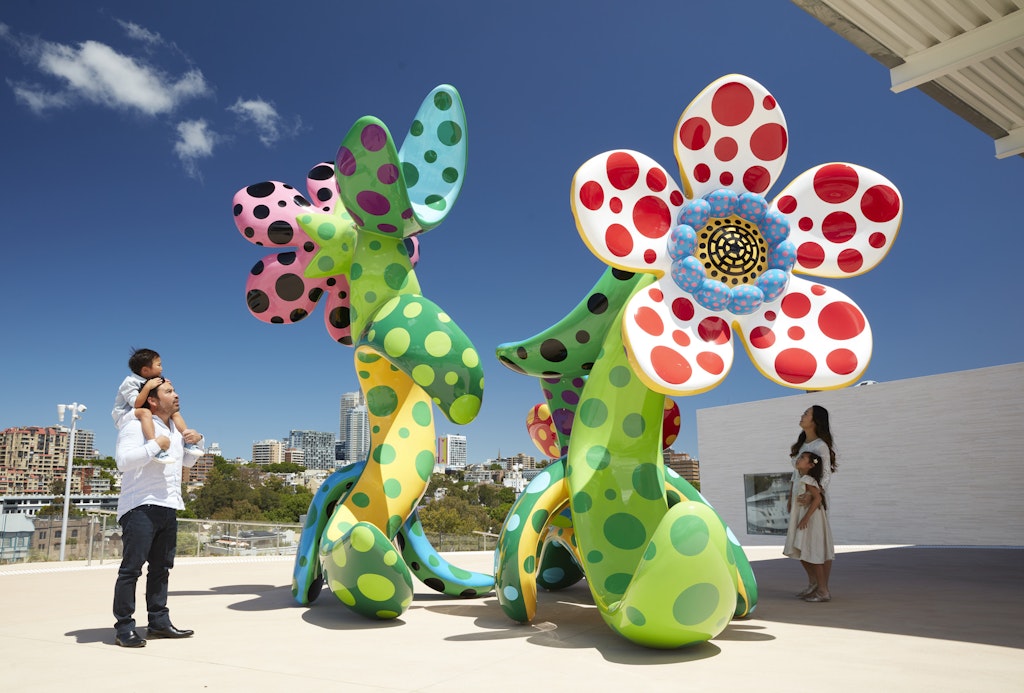Yayoi Kusama

Yayoi Kusama Flowers that Bloom in the Cosmos 2022, commissioned for the Sydney Modern Project with funds provided by the Art Gallery of New South Wales Foundation and the Gandel Foundation 2022 © Yayoi Kusama, photo © Art Gallery of New South Wales, Zan Wimberley
Flowers that Bloom in the Cosmos 2022
Flowers have been a lifelong passion for Japan’s Yayoi Kusama, one of the world’s most beloved living artists. For the Art Gallery of New South Wales, Kusama has created an exuberant floral sculpture that will be visible day and night, prominently positioned on the new building’s terrace overlooking Woolloomooloo Bay.
-
K–6 discussion questions
Look at Flowers that Bloom in the Cosmos and discuss the size, colour, form and patterning of the flowers. How do these flowers make you feel? What do you imagine they might smell or feel like? Do you think these are real flowers or invented? Why?
Kusama has said that she sees herself and everyone in the world as a polka dot, each one connected to other dots. The earth too is a dot, connected to other dots that make up the universe. Look carefully at the polka dots on this work. Are they all the same? How are they connected? Are they deliberately or randomly placed? What do the dots represent to you?
-
K–6 activities
Invent your own new species of flower and describe its qualities. Create a botanical drawing of this new species, including annotations of all parts of the plant. Give your plant a botanical nomenclature and a common name.
Using coloured paper, create a series of artworks exploring the idea of repetition. Experiment with different shapes, sizes and patterns. Make sure you think about the spaces in between the images.
-
7–12 discussion questions
Flowers have been a lifelong passion for Kusama. Symbolically, they reflect the artist’s disregard for dichotomies: they signify both life and death, celebration and mourning. What else do flowers symbolise in life and art? How do they relate to Kusama’s preoccupation with repetition?
Obsessive repetition is a theme throughout Kusama’s practice. Research other artists who have used repetition in their work. How does its application differ conceptually from Kusama’s? What are the different effects on the viewer?
Although Kusama’s art isn’t associated with one particular art movement, there are relationships to feminism, pop art, surrealism, minimalism and abstract expressionism. Discuss which elements of these art movements might be seen in the work Flowers that Bloom in the Cosmos.
-
7–12 activities
Take a photograph or sketch a detail found in nature, paying attention to patterns and marks. Manipulate the image using digital media to reduce and simplify these patterns into a geometric design. Enlarge this design and use vivid colour to create an artwork that pops.
Flowers that Bloom in the Cosmos was commissioned specifically for the site on the Art Gallery’s outdoor terrace. Find an area in your school grounds that would be great for a site-specific artwork. Working as a class group, create a design proposal for this artwork that will be submitted to your principal for approval. Consider the visual qualities, materials, scale, impact and overall meaning of the work.
